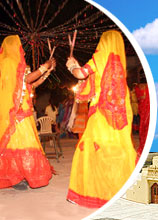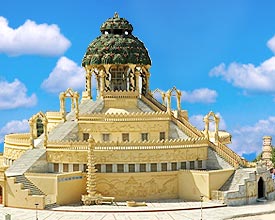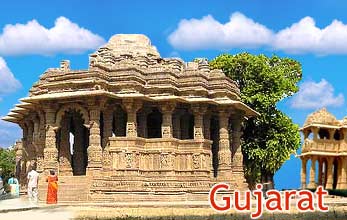 |
(© Piyush Rana)
|
The animal was once found in the plains and the state. Today, its habitat has been restricted within the boundaries of the national park. The beauty of the animal could have been one of the major reasons behind its decreasing population. As the name suggests, the upper part of its body is black in color, while the lower part is white. There are also white rings around its eyes, but the most striking attribute of the animal is its horns. Its ringed horns are approximately 70 cm long and have three to four spiral twists.
The female black buck is usually brown in color and does not possess horns. Black Buck Wildlife Sanctuary was once the private grasslands of the ex princely state of Bhavnagar, specifically to be used by the Maharaja. It is surrounded by Gulf of Kambhat towards south and wastelands and agricultural land on the other. Herds of Antelopes are seen wandering which attracts a number of tourists in the region. There is a bungalow provided by the Government Forest Department, which can be a good accommodation option.
The varied wildlife preserved by the sanctuary mainly comprises of Blackbucks, Wolves, Houbara Bustard and Lesser Floricans, with Foxes, Jackals and Jungle Cats as the main carnivore species. Other species include Wild Pigs, Hares and Rodents, typical of the savannah type grasslands and thorn scrubs. Sandgrouse and Larks are also seen here in fair numbers. According to a British harrier-expert, Roger Clarke, the Harrier Roost found at the Black Buck National Park is one of the largest in the world.









